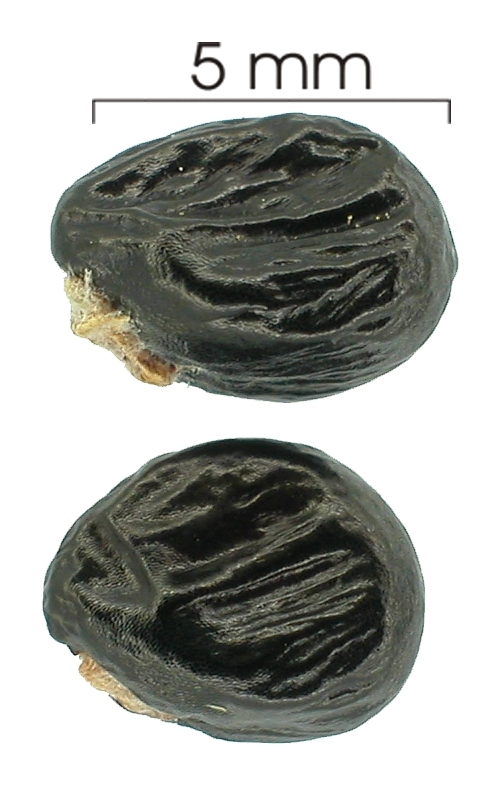

|
|
|
|
Family: Dilleniaceae
Bejuco candela, more...Bejuco de fuego
|
Descripción: Plantas trepadoras o lianas con tronco marrón. Ramitas glabras. Hojas simples y alternas, de 7-18 x 4-12 cm, elípticas, con ápice redondo, agudo o acuminado, bordes oscuramente dentados y base decurrente. Las hojas presentan de 9-15 pares de nervaduras secundarias, son lisas en el haz y ligeramente escabrosas en el envés. Pecíolo de 1-2.5 cm de largo y ligeramente alado. Flores blancas. Frutos globosos, de 0.5-1 cm de largo, glabros. Semillas negras. Especies Parecidas: A menudo se confunde con LK tet1po Tetracera portobellensis LK2 , pero en T. portobellensis la corteza exterior del tronco es exfoliante en láminas y las hojas tienen de 12-24 pares de nervaduras secundarias. T. ovalifolia sensu auct. non DC. Androdioecious liana; trichomes of younger parts dense and stellate, interspersed with sparse and simple ones, the leaves and stems usually glabrate in age. Petioles 1.5-3.5 cm long, winged mostly in apical half; blades +/- ovate to elliptic, rounded to abruptly short-acuminate at apex, rounded to obtuse at base, 4-17 cm long, 4-9 cm wide (to 28 cm long and 13 cm wide on juvenile leaves), chiefly stellate-pubescent except on veins, pustular, entire or becoming serrulate toward apex; lateral veins in fewer than 15 pairs. Flowers unisexual, 1-1.5 cm wide, pedicellate; sepals 5, obovate, to 5 mm long (longer in fruit), glabrous or slightly pubescent inside; petals 4 or 5, white, obovate, 7-9 mm long; stamens very numerous, 5 mm long, somewhat reduced and nonfunctional in pistillate flowers; carpels 2-5, pyriform; styles 1 per carpel, l-2 mm long, held above stamens in pistillate flowers, reduced in staminate flowers; stigma simple. Follicles 2-5, glabrous, tawny, 6-8 mm long (excluding style), dehiscing along inner side; seeds 1-4, +/- reniform, ca 4 mm long, shiny, black, enveloped by a lacerate red aril. Croat 6575. Uncommon; collected only along the shore and along Lutz Creek. Seasonal behavior uncertain. On BCI no flowers have been collected. All collections in central Panama, however, indicate that the species may flower twice a year, once in the dry season, with the fruits maturing from July to October, and once in the late rainy season (October and November), with the fruits maturing in the middle of the dry season. Although Standley reported this taxon as T. sessiliflora Tr. and Planch., a synonym of T. portobellensis, his description leaves no doubt that he was referring to T. hydrophila. T. hydrophila was mistakenly reported by Hunter in the Flora of Panama (1965) as T. ovalifolia DC., a synonym of T. costata subsp. rotundifolia (J. E. Smith) Kub., known only from the Guianas. Belizeto Panama, Colombia, and Ecuador. In Panama, probably occurring in all lowland areas; known from tropical moist forest in the Canal Zone, Bocas del Toro, and Panama (San Jose Island) and from premontane wet forest in Bocas del Toro. |
|
|
|


















